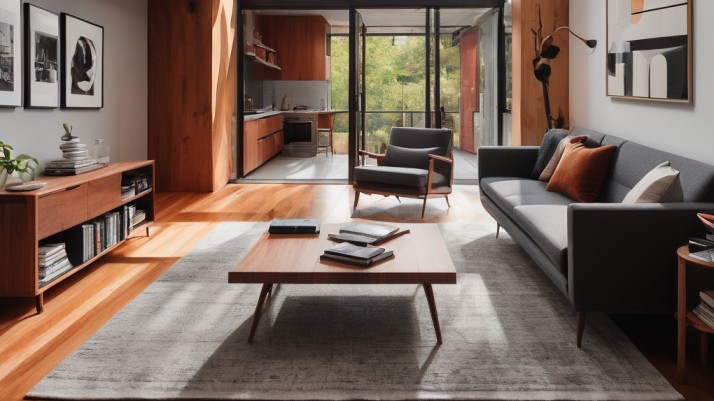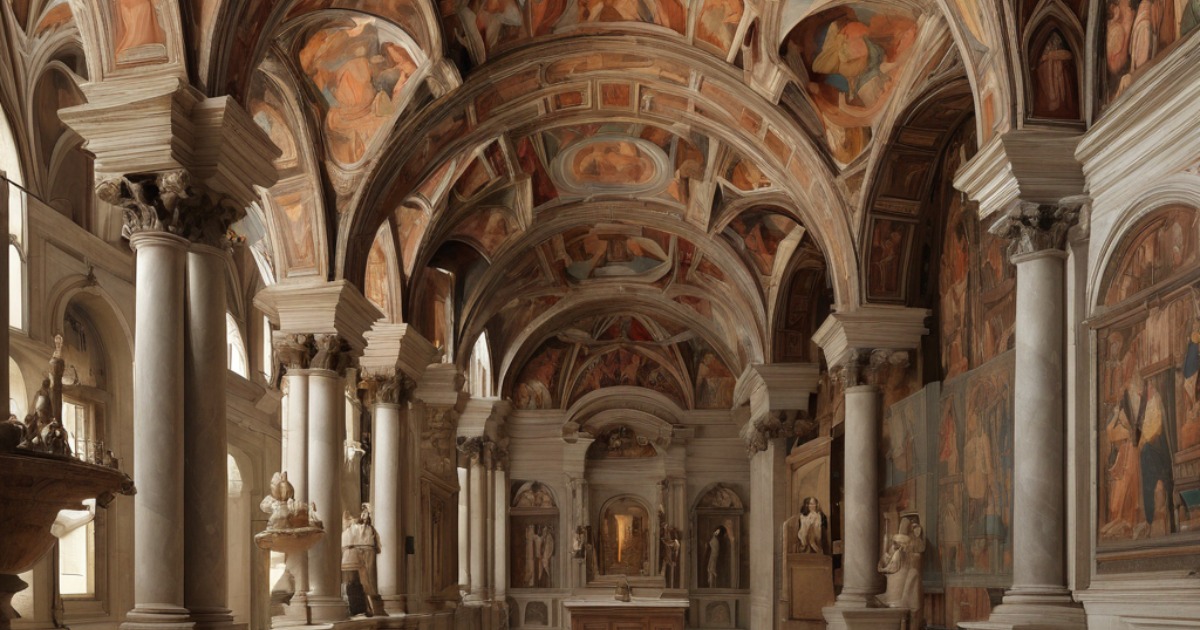1. Introduction
In today’s competitive business landscape, establishing a strong brand identity is crucial for success. One powerful way to do this is through modern architecture. The design of your office, store, or facility can speak volumes about your brand and leave a lasting impression on customers and clients.
Contemporary architectural designs have the potential to captivate, inspire, and differentiate your brand from the competition. In this comprehensive guide, we will unlock the secrets of modern architecture and explore how it can enhance your brand marketing efforts. So, whether you are considering a redesign or simply want to understand the beauty and impact of contemporary designs, this blog is for you.
2. The Importance of Modern Architecture
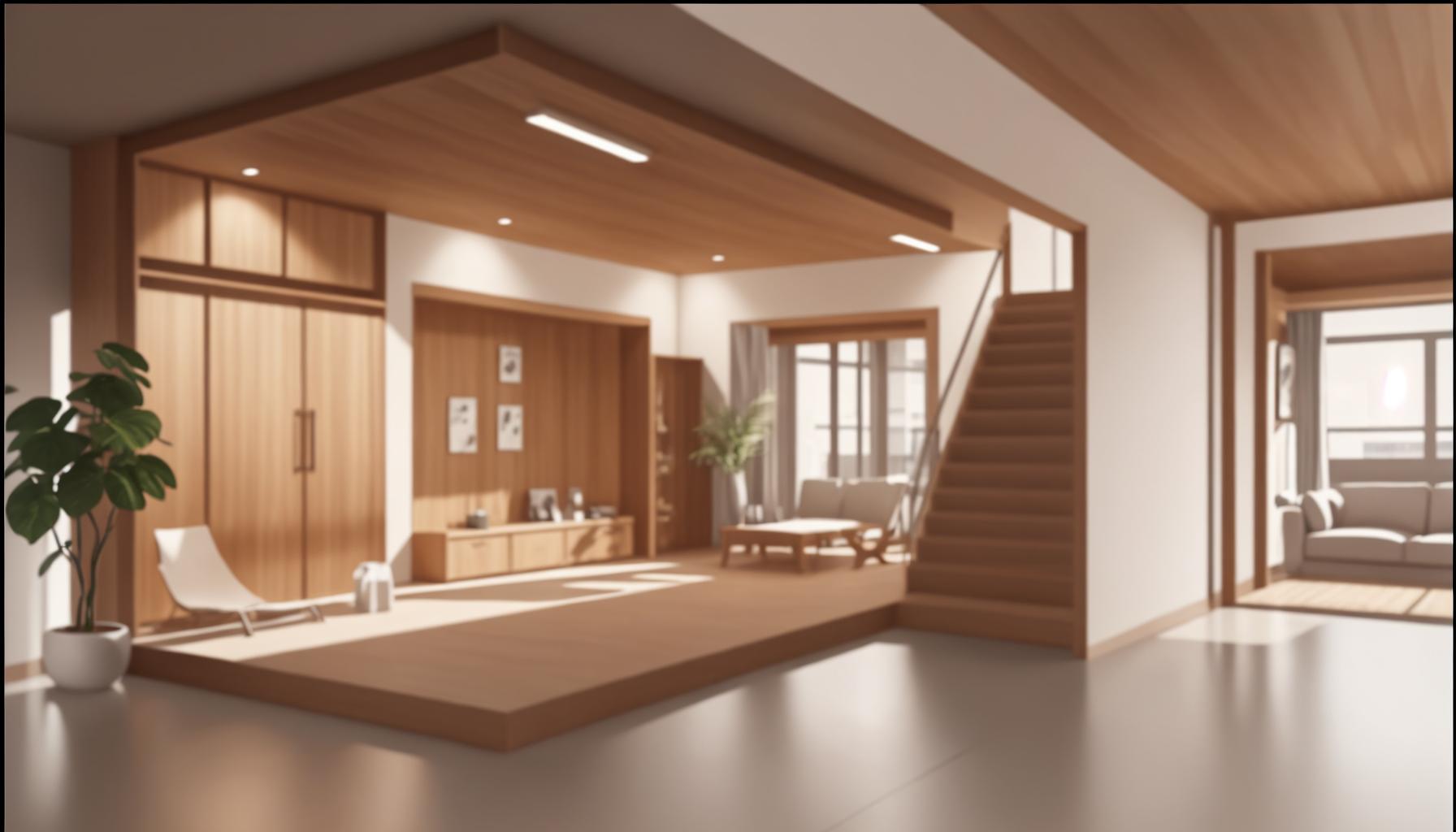
Modern architecture plays a critical role in shaping the success and perception of a brand. Gone are the days of cookie-cutter buildings and bland designs. In today’s competitive market, businesses need to stand out and make a statement. Contemporary architectural designs offer a unique opportunity to do just that.
One of the key reasons why modern architecture is important is its ability to create a memorable and distinctive brand identity. By incorporating bold and innovative design elements, a company can communicate its values, style, and vision to customers and clients. Whether it’s through the use of sleek lines, sustainable materials, or avant-garde structures, modern architecture can help a business make a lasting impression.
Moreover, modern architecture is not solely focused on aesthetics. It also prioritizes functionality and efficiency. With careful consideration of space utilization, natural lighting, and sustainable practices, contemporary designs can improve productivity and reduce operational costs.
In conclusion, modern architecture is a powerful tool that can elevate a brand and set it apart from the competition. It combines striking aesthetics with practicality, creating spaces that not only enhance the user experience but also strengthen the brand’s image. In the next section, we will delve deeper into the various elements and principles that make up modern architectural designs. Stay tuned!
Also read:Designing Dreams: Transform Your Space with Expert Interior Design Tips
3. Understanding the Principles of Contemporary Designs 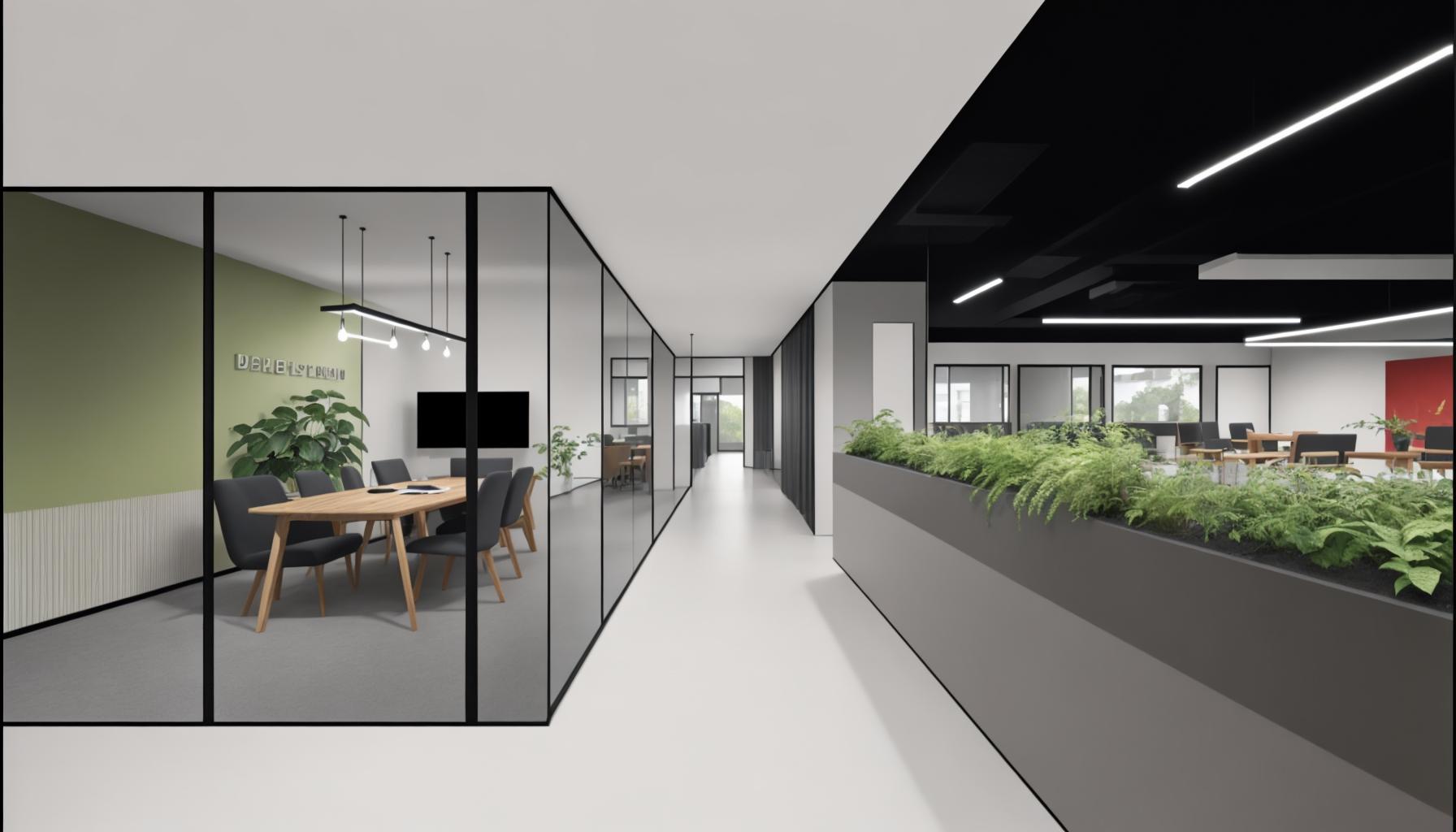
In any architectural design, understanding the underlying principles is crucial. This holds especially true for contemporary designs, which often challenge traditional norms and push boundaries. By understanding these principles, we can unravel the secrets behind the beauty and functionality of modern architecture.
Balance is an important principle in contemporary designs. It involves the equal distribution of visual weight, creating harmony and stability within a space. Whether through symmetry or asymmetry, balance brings a sense of equilibrium, allowing the design to feel cohesive and pleasing to the eye.
Another key principle is simplicity. Modern architecture embraces minimalism, focusing on clean lines and streamlined forms. By stripping away unnecessary elements, a design can achieve a sense of clarity and elegance that is both visually appealing and functional.
Furthermore, the principle of sustainability holds great importance in contemporary designs. This involves incorporating eco-friendly materials, energy-efficient systems, and renewable energy sources into the design. By taking environmental factors into account, architects can create spaces that minimize their carbon footprint and promote a greener future.
Stay tuned for the next section, where we will explore more principles of contemporary designs and how they contribute to the overall beauty and functionality of modern architecture.
4. The Evolution of Modern Architecture: From Mid-Century to Postmodernism
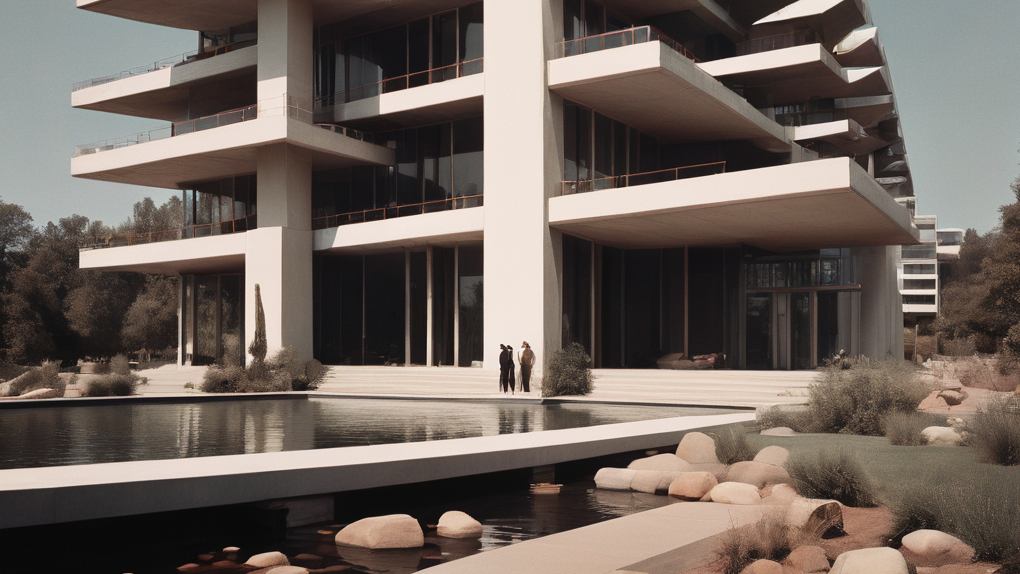
Modern architecture has undergone significant transformations over the years, from the mid-century movement to the advent of postmodernism. These phases in architectural history have shaped and influenced contemporary designs, adding depth and complexity to the overall beauty and functionality of modern architecture.
The mid-century movement, also known as the International Style, emerged in the early 20th century. It emphasized simplicity, open floor plans, and the integration of indoor and outdoor spaces. Architects such as Le Corbusier and Ludwig Mies van der Rohe were pioneers in this movement, creating iconic structures like the Villa Savoye and the Farnsworth House.
In the later decades, postmodernism challenged the rigid principles of modern architecture. Architects embraced whimsical and eclectic styles, incorporating historical references and diverse materials into their designs. This movement, led by architects like Robert Venturi and Frank Gehry, brought a new level of creativity and artistic expression to contemporary architecture.
Understanding the evolution of modern architecture is crucial in unraveling the secrets behind the beauty and functionality of contemporary designs. By exploring these different phases, we can appreciate the influences and inspirations that have shaped the architectural landscape we see today. Stay tuned for the next section, where we will delve deeper into the characteristics and features of mid-century and postmodern architecture.
5. Key Elements of Contemporary Designs

Contemporary architecture is characterized by several key elements that contribute to its unique beauty and functionality. These elements combine to create spaces that are both aesthetically pleasing and highly practical.
One of the key elements of contemporary design is the use of clean lines and geometric shapes. Straight lines and sharp angles create a sense of order and simplicity, while curved lines and organic shapes add a touch of fluidity and visual interest. These elements can be seen in the sleek facades of modern skyscrapers or the curved walls of avant-garde museums.
Another important element is the integration of technology and sustainable design principles. Contemporary architects often utilize the latest advancements in building materials and technology to create energy-efficient and environmentally friendly structures. From solar panels to smart home systems, these features not only reduce the carbon footprint but also enhance the overall functionality and comfort of the space.
Additionally, contemporary designs often focus on blurring the boundaries between indoor and outdoor spaces. Large windows, sliding doors, and outdoor living areas create a seamless connection between the interior and exterior, allowing for a harmonious interaction with nature. This integration of indoor and outdoor spaces also enhances the overall sense of openness and freedom within the architectural design.
In the next section, we will explore these key elements in more detail, discussing specific examples of contemporary buildings that exemplify these characteristics. By understanding these elements, aspiring architects and design enthusiasts can gain a deeper appreciation for the beauty and functionality of contemporary architecture. Stay tuned for an in-depth analysis of these key elements and their significance in modern design.
6. Achieving Aesthetically Pleasing Spaces: Materials and Techniques in Modern Architecture
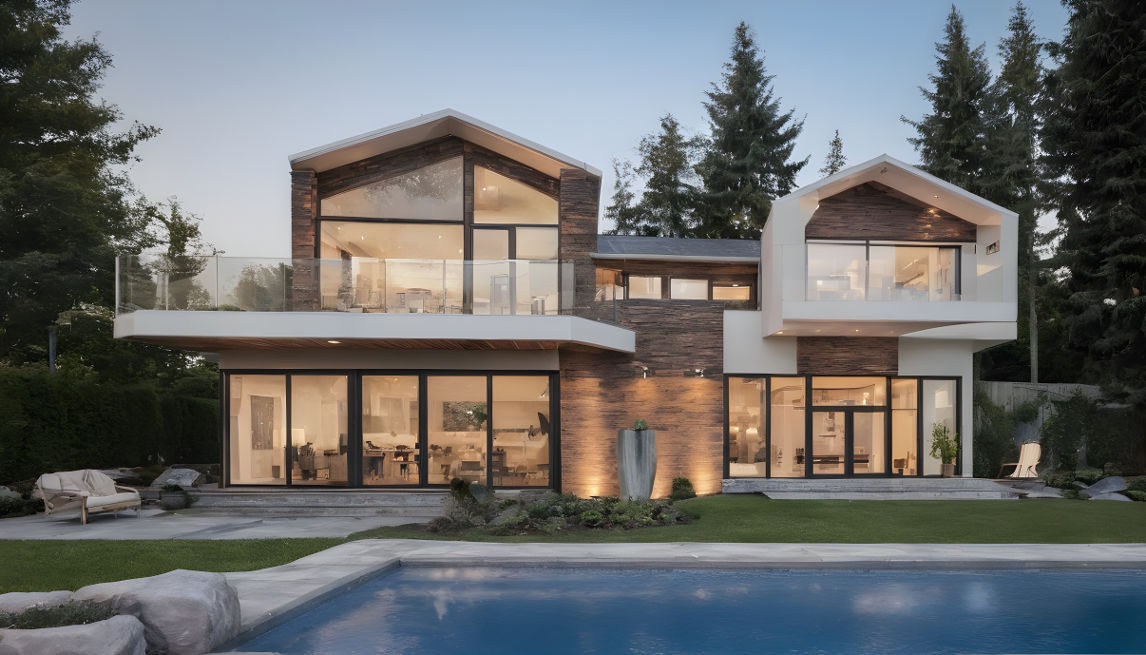
Contemporary architecture embraces a wide range of materials and techniques that contribute to the creation of aesthetically pleasing spaces. The choice of materials, such as glass, steel, and concrete, plays a crucial role in defining the overall look and feel of a contemporary structure.
Glass is a key material used extensively in modern architecture due to its transparency and versatility. It allows natural light to flood the interiors, creating a sense of openness and spaciousness. The use of glass also blurs the boundaries between indoor and outdoor spaces, creating a seamless connection with the surrounding environment.
Steel, then again, is known for its solidness and strength.It is often used to create bold and dramatic designs, such as cantilevered structures and soaring skyscrapers. The use of steel in contemporary architecture also allows for large, open floor plans without the need for excessive columns or walls, promoting a sense of freedom and flexibility.
Concrete is another popular material in modern architecture, appreciated for its stability and adaptability. It can be molded into various shapes and sizes, allowing architects to create unique and innovative designs. The use of exposed concrete, known as Brutalism, has gained popularity in contemporary architecture for its raw and industrial aesthetic.
In addition to the choice of materials, modern architects employ innovative techniques to further enhance the aesthetic appeal of their designs. These techniques include parametric design, which utilizes computational algorithms to generate complex and fluid forms, and kinetic architecture, which incorporates moving parts into the structure, adding an element of dynamism.
In the next section, we will explore specific examples of contemporary buildings that demonstrate the use of these materials and techniques to achieve visually stunning spaces. By highlighting these examples, we hope to inspire and encourage aspiring architects to push the boundaries of modern design and create truly remarkable structures. Stay tuned for an in-depth analysis of these materials and techniques in action.
7. Sustainable Architecture: Integrating Environmental Responsibility into Contemporary Designs
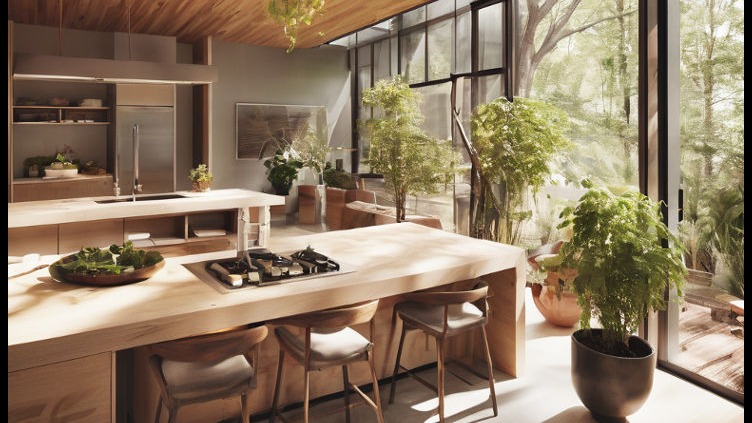
Sustainable architecture is an essential aspect of contemporary design. With growing concerns about climate change and environmental degradation, architects are increasingly incorporating sustainable practices into their designs.
One of the critical standards of reasonable engineering is energy productivity.. Buildings are designed to minimize energy consumption and utilize renewable sources of energy, such as solar power or geothermal heating and cooling systems. Innovative technologies, like smart windows that adjust their transparency based on external conditions, contribute to efficient energy usage.
Water conservation is another critical consideration in sustainable architecture. Rainwater harvesting systems, water recycling, and low-flow fixtures are employed to reduce water consumption. Green roofs and vertical gardens not only enhance the aesthetic appeal of buildings but also provide insulation and reduce heat absorption, thereby reducing the need for air conditioning.
Materials play a significant role in sustainable architecture as well. Architects are using eco-friendly and locally sourced materials to minimize the carbon footprint of construction. Additionally, the concept of adaptive reuse is gaining popularity, where existing structures are creatively repurposed instead of being demolished, reducing waste.
By integrating environmental responsibility into contemporary designs, architects are not only creating visually appealing spaces but also contributing to a more sustainable future. In the next section, we will explore some remarkable examples of sustainable architecture, showcasing how these designs harmoniously blend aesthetics with environmental consciousness. Stay tuned for the captivating stories behind these awe-inspiring structures.
8. Contemporary Architects to Watch and Inspire

In our continuous exploration of the beauty of contemporary architecture, it is essential to acknowledge the architects who are pushing the boundaries of sustainable design. These visionaries inspire us with their innovative approaches and commitment to environmental consciousness.
One such architect is Sarah Sze, renowned for her ability to seamlessly blend art and architecture. Known for her work on the High Line in New York City, Sze incorporates sustainable materials and energy-efficient technologies into her designs, creating immersive experiences that promote sustainability.
Bjarke Ingels is another architect who is leading the way in sustainable architecture. His firm, BIG, is renowned for its bold and environmentally friendly designs. From the iconic Amager Bakke Waste-to-Energy Plant in Copenhagen to the innovative Spiral Tower in Manhattan, Ingels consistently showcases how sustainability can be integrated beautifully into modern designs.
The works of architects like Sze and Ingels remind us that sustainable architecture goes beyond energy-efficient features. It is about creating spaces that inspire, excite, and contribute positively to the environment. In the next section, we will delve deeper into the transformative projects of these exceptional architects, examining how they are reshaping the landscape of contemporary architecture.
9. Unlocking the Secrets: Tips for Incorporating Modern Architecture into Your Space
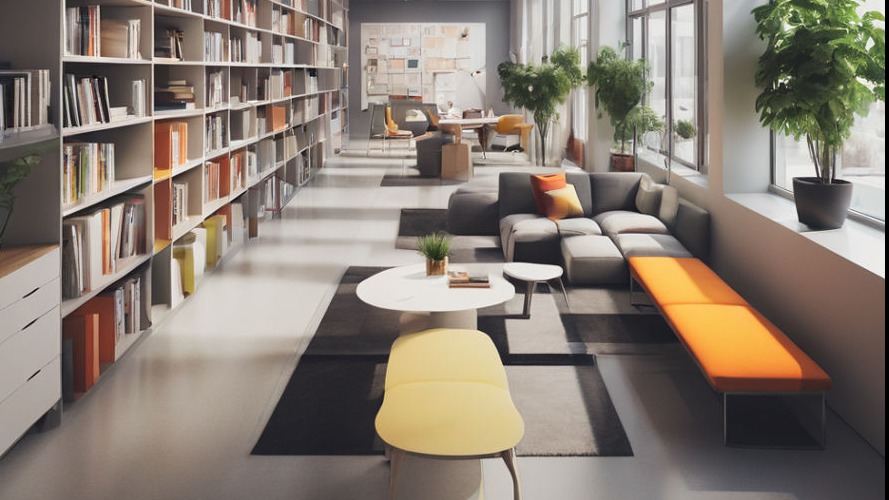
As we have witnessed the remarkable works of innovative architects and their dedication to sustainable design, it’s only natural to wonder how we can incorporate elements of modern architecture into our own spaces. In this section, we will explore some practical tips to help you unlock the secrets of modern architecture and infuse your spaces with contemporary beauty.
1. Embrace Minimalism:
Modern architecture often features clean lines, open spaces, and a minimalist aesthetic. Simplify your interior by decluttering and opting for sleek and minimal furnishings.
2. Play with Natural Light:
Incorporate large windows, skylights, and glass walls to maximize natural light and create a seamless connection between indoor and outdoor spaces.
3. Use Sustainable Materials:
Choose environmentally friendly materials such as reclaimed wood, recycled glass, and low VOC paints to reduce your carbon footprint and create a healthier living environment.
4. Experiment with Geometric Shapes:
Modern architecture embraces geometric shapes and forms. Consider incorporating asymmetric angles, curves, and unusual shapes to add drama and visual interest to your space.
5. Integrate Smart Technologies:
Stay ahead with the latest advancements in technology by incorporating smart home systems, energy-efficient appliances, and innovative lighting solutions.
By implementing these tips, you can unlock the secrets of modern architecture and transform your own space into a contemporary masterpiece. In the next section, we will explore the role of technology in modern architecture and how it is shaping the future of design. Stay tuned!
10. The Future of Modern Architecture: Trends and Innovations to Look Out For

In our journey to unlock the secrets of modern architecture, we have explored practical tips to infuse contemporary beauty into our spaces. Now, let’s delve into the future of modern architecture and the exciting trends and innovations that lie ahead.
1. Sustainable Design:
As environmental consciousness grows, the future of modern architecture will prioritize sustainable design. Materials such as bamboo, recycled plastic, and biodegradable compounds will become commonplace, helping us create greener and more eco-friendly structures.
2. Integration of Nature:
Biophilic design, which seeks to connect individuals with nature, will continue to gain momentum. Expect to see more green roofs, vertical gardens, and living walls that blur the lines between the built environment and the natural world.
3. Virtual Reality and Augmented Reality:
These emerging technologies are revolutionizing the way architects and designers conceptualize and present their ideas. Through immersive experiences, clients can walk through virtual spaces and make real-time modifications, making the design process more efficient and interactive.
4. 3D Printing:
With its ability to create complex structures quickly and cost-effectively, 3D printing is set to disrupt the construction industry. Architects will have greater freedom to experiment with unconventional forms and textures, pushing the boundaries of what is possible in modern architecture.
5. Smart Cities:
The fusion of technology and architecture will extend beyond individual buildings. Smart cities, equipped with advanced systems for energy management, transportation, and waste disposal, will become the embodiment of modern architecture’s potential to create sustainable, efficient, and livable urban environments.
By keeping an eye on these trends and innovations, we can stay at the forefront of modern architecture and continue to unlock its beauty and potential. In the next section, we will explore some iconic examples of modern architecture from around the world. Stay tuned!
Conclusion:
Embracing the Beauty and Potential of Contemporary Designs
In conclusion, modern architecture offers an exciting array of possibilities that can transform our spaces into stunning works of art. By embracing the principles of sustainable design, integrating nature into our built environments, and embracing emerging technologies like virtual reality and 3D printing, we can unlock the true beauty and potential of contemporary designs.
As we have seen, the future of modern architecture is headed towards a greener and more eco-friendly approach. Materials such as bamboo and recycled plastic will become increasingly prevalent, allowing us to create structures that harmoniously blend with the environment. In addition, the integration of nature through concepts like biophilic design will help us reconnect with the natural world, resulting in spaces that inspire wellness and serenity.
With the advent of virtual reality and augmented reality, architects and designers will have new tools to visualize and communicate their ideas. Clients can now walk through virtual spaces and make real-time modifications, making the design process more interactive and efficient.
Moreover, 3D printing is set to revolutionize the construction industry, offering architects greater freedom to explore unconventional forms and textures. With this cutting-edge technology, the possibilities for pushing the boundaries of modern architecture are endless.
Finally, the concept of smart cities will take modern architecture to a whole new level. With advanced systems for energy management, transportation, and waste disposal, our urban environments will become more sustainable, efficient, and livable.
By staying informed about these trends and embracing the innovations shaping modern architecture, we can unlock its full beauty and potential. Whether it’s exploring iconic examples of modern architecture or incorporating these principles into our own spaces, the journey to unlock the secrets of contemporary designs is a worthwhile pursuit. So let’s keep our eyes open to the evolving world of modern architecture and continue to be amazed by its beauty and potential.







